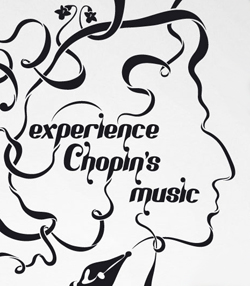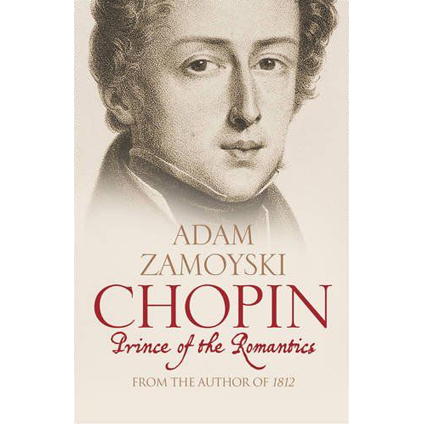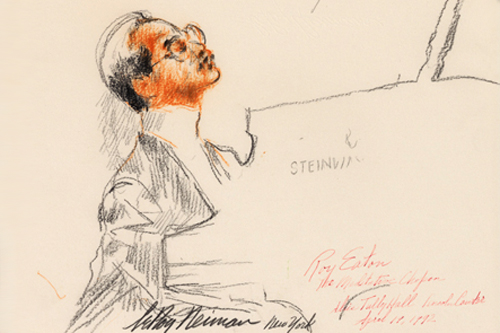 It is the 1830s. The audience sitting in the parlour is ecstatic about the performance of the pianist from a far-away land and is begging for more. He graciously bows to the applause and sits at the piano again, this time to play something no one, not even he, had ever heard before. He starts from a simple melody and then, releasing his imagination, departs from the main theme and plays one variation after another. Had it not been for the time, one might think this was a jazz concert, since improvisation is something we associate mainly with jazz. However, improvisation has been known in classical music for ages, and this account refers to a typical recital Chopin might have given while living in Paris. He was notorious for brilliance in improvising, which was often recounted by his contemporaries, though sometimes it is hard to tell whether they witnessed him improvising or simply composing. This is how George Sand, a French writer and Chopin’s long companion, captured the composer’s moment of creation in her Impressions et souvenirs:
It is the 1830s. The audience sitting in the parlour is ecstatic about the performance of the pianist from a far-away land and is begging for more. He graciously bows to the applause and sits at the piano again, this time to play something no one, not even he, had ever heard before. He starts from a simple melody and then, releasing his imagination, departs from the main theme and plays one variation after another. Had it not been for the time, one might think this was a jazz concert, since improvisation is something we associate mainly with jazz. However, improvisation has been known in classical music for ages, and this account refers to a typical recital Chopin might have given while living in Paris. He was notorious for brilliance in improvising, which was often recounted by his contemporaries, though sometimes it is hard to tell whether they witnessed him improvising or simply composing. This is how George Sand, a French writer and Chopin’s long companion, captured the composer’s moment of creation in her Impressions et souvenirs:
“Chopin is at the piano, quite oblivious of the fact that anyone is listening. He embarks on a sort of casual improvisation, then stops. ‘Go on, go on,’ exclaims Delacroix, ‘That’s not the end!… It’s not even a beginning'”. Sand goes on narrating the discussion between Chopin and Delacroix on how to match the right colour of the sound with the right form. Chopin starts to play again and “…gradually quiet colours begin to show, corresponding to the suave modulations sounding in our ears. Suddenly the note of blue sings out, and the night is all around us, azure and transparent. Light clouds take on fantastic shapes and fill the sky. They gather about the moon, which casts upon them great opalescent discs, and wakes the sleeping colours. We dream of a summer night, and sit there waiting for the song of the nightingale.”
This is exactly the ambience that we can hear in jazz interpretations of Chopin’s compositions played by the Andrzej Jagodziński Trio 200 years after the composer’s birth. Its leader, Andrzej Jagodziński, is a classically trained Polish musician, who was inspired by this Romantic musical genius. The melodic quality of Chopin’s music, the melancholic mood and the harmonic depth attracted him to the point that he realized this was the climate he wanted to create in his music, that these were the emotions he wanted to evoke in the audience – and that he wanted to play jazz. He released his first album devoted to Chopin’s music in 1994. There had been some attempts at adapting Chopin’s music to jazz earlier, such as by the vocal jazz ensemble Novi Singers, which recorded a Chopin album in the 1970s. Yet these were merely transcriptions of the original material for the human voice. It was Jagodziński who, for the first time, successfully transferred Chopin’s music into the jazz domain, pioneering the so-called “Chopin stream” in Polish jazz. Many Polish jazz musicians followed the path, including Adam Makowicz, Włodzimierz Nahorny, and Leszek Możdżer.
Interestingly enough, all of them were classically trained. When Makowicz and Nahorny went to music school, formal jazz education was not available in Poland, though jazz was no longer forbidden, as it had been during the Stalin regime. Makowicz discovered jazz through Music USA-Jazz Hour, a radio program broadcast on the Voice of America, produced and hosted by Willis Conover. He was so fascinated by the syncopated rhythms and the swing that he quickly realized that he was going to devote his career to playing jazz. He turned to Chopin because of the wide range of beautiful melodies in his compositions, which provide such joyful and abundant material for improvisation and give an artist great flexibility. Makowicz cites the original to the extent that it can be easily recognized. On the other hand, Leszek Możdżer, who is also fascinated by Chopin’s melodies, saturated with the elements of Polish folk music, takes more liberties in his improvisations. Możdżer is an innovative pianist and a dazzling entertainer, always pushing the boundaries and exploring the melodic and harmonic possibilities that Chopin’s music and the instrument itself have to offer. Each musician is unique; still, the interpretations each one creates convey the nostalgic aura and the utter beauty of Chopin’s music.
Chopin’s melodies have been used in jazz extensively, the most notable example being the bossa nova piece, “How Insensitive,” written by the Brazilian composer Antonio Carlos Jobim (based on Chopin’s Prelude E minor.) The influence of Chopin’s music on jazz, however, goes far beyond melody. Chopin was recognized for a resonant use of chromatic chords that lead to chromatic scales – so useful in jazz improvisations. Stefan Kisielewski, a Polish composer and writer, even claims that Chopin’s chords can be heard in George Gershwin’s and Duke Ellington’s music.
How does improvisation in jazz differ from that in classical music? Depends on whom you ask. Makowicz stresses the swing. Jagodziński adds the syncopated rhythm and less restraining style. He argues that swing, typical for the jazz of the 1930s and ‘40s, no longer defines jazz. After all, there are many jazz musicians who do not swing, and there are musicians who swing but do not play jazz. Możdżer claims there is no difference, because the essence of improvisation lies in its unpredictability and the creation of a once-in-a-lifetime magical experience.
Chopin has also inspired Polish jazz vocalists such as Lora Szafran, Urszula Dudziak, and Dorota Miśkiewicz. Chopin Songbook, with jazz singer Inga Lewandowska’s beautiful renditions of Chopin’s most famous songs, is my favourite. Her airy, husky vocals create a poignant sense of longing and fit Chopin’s music perfectly.
There is some controversy among music critics surrounding “Chopin stream”; still, it is an exclusively Polish phenomenon and – for me – the face of Polish jazz on the international jazz stage. CR
The pianists’ opinions are based on my published interviews with Adam Makowicz, Andrzej Jagodziński, and Leszek Możdżer.
Imagery
From chopin2010.pl



